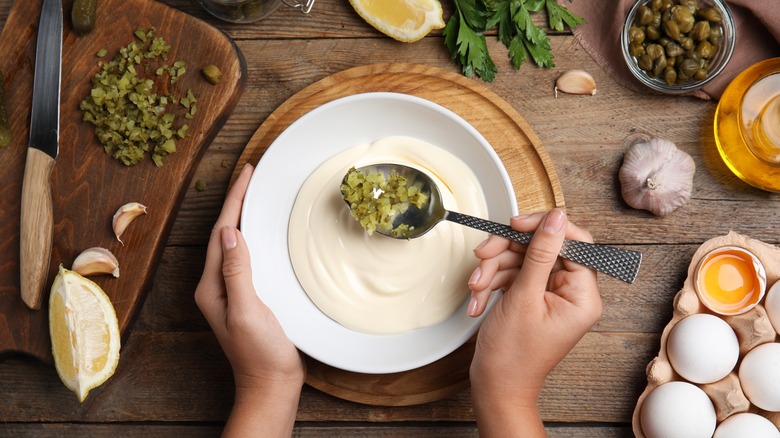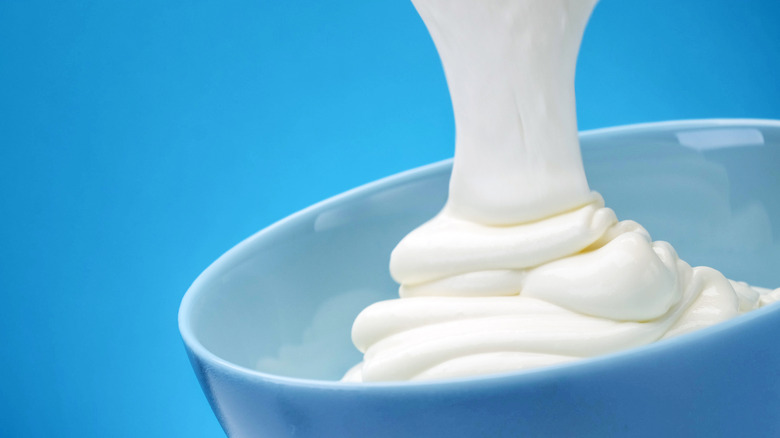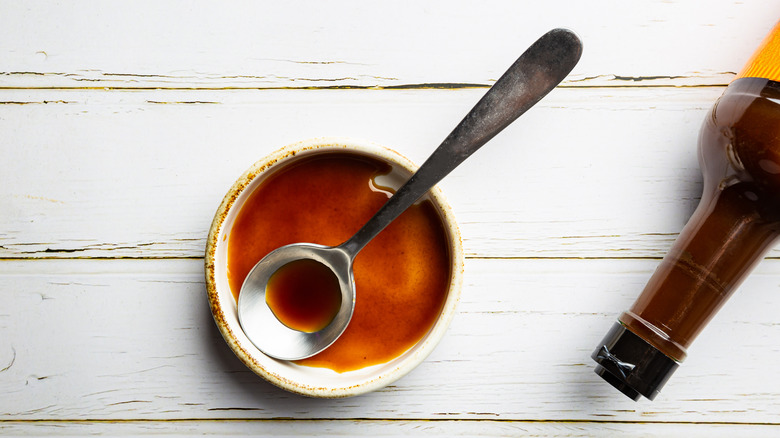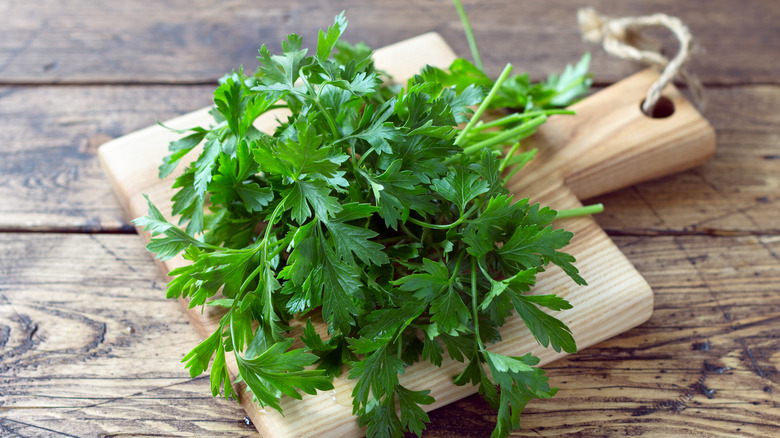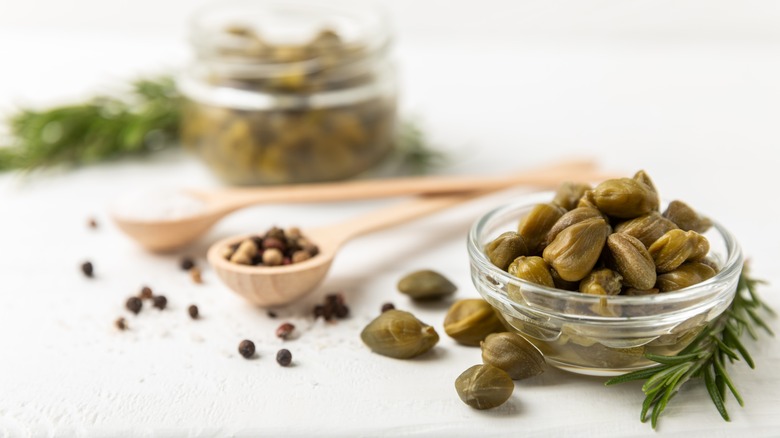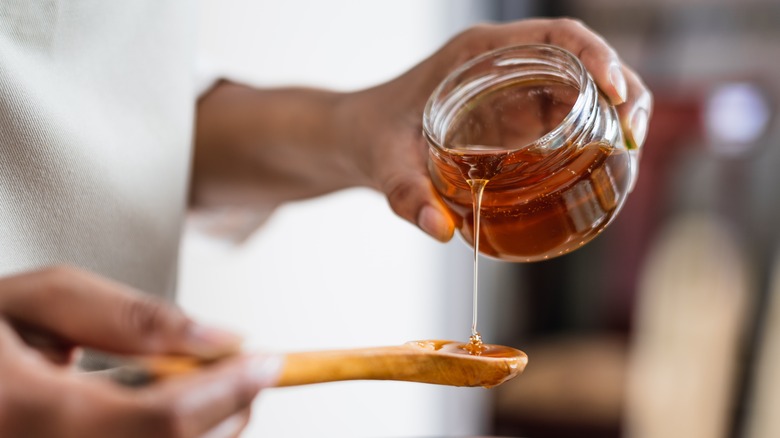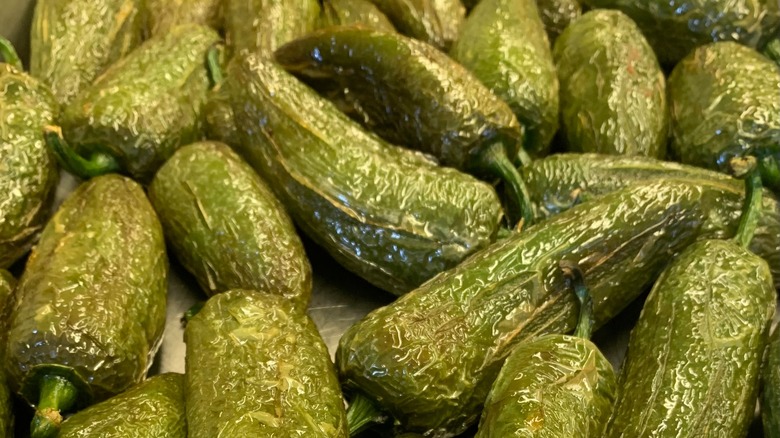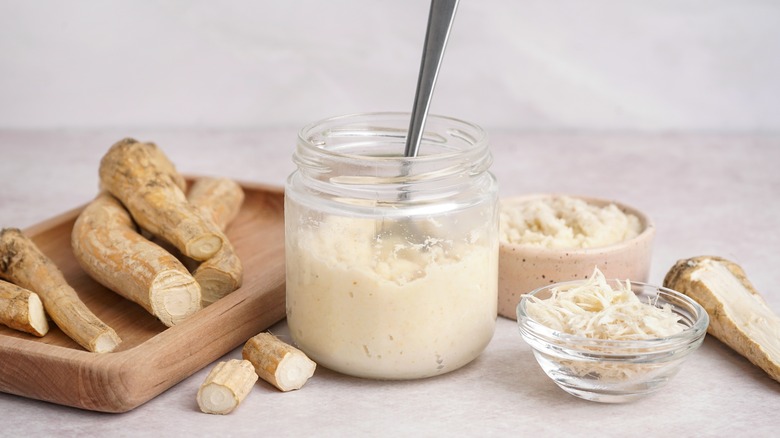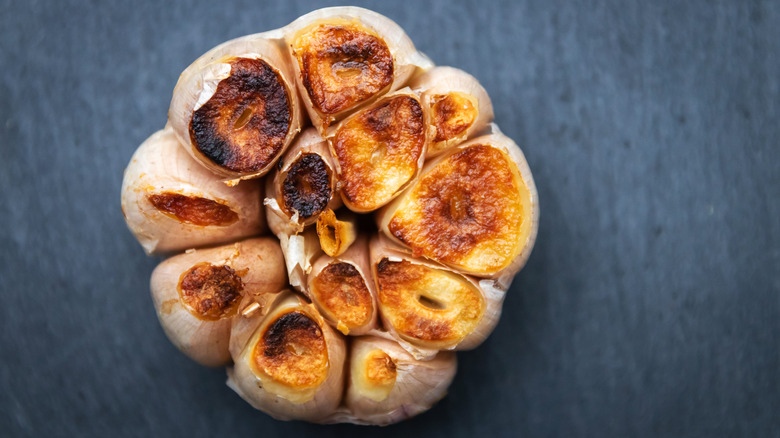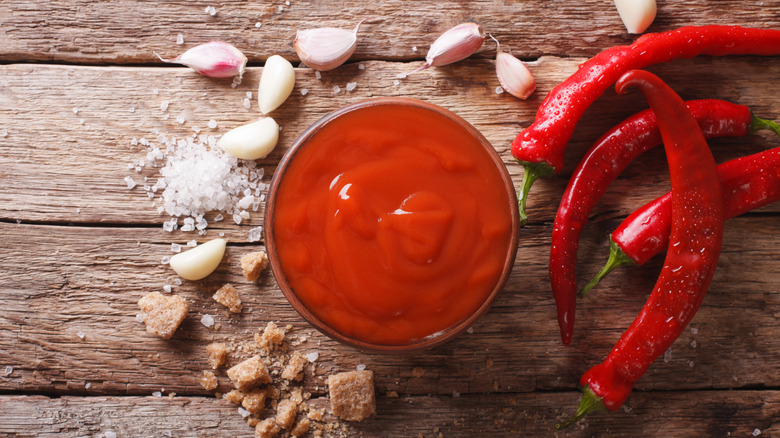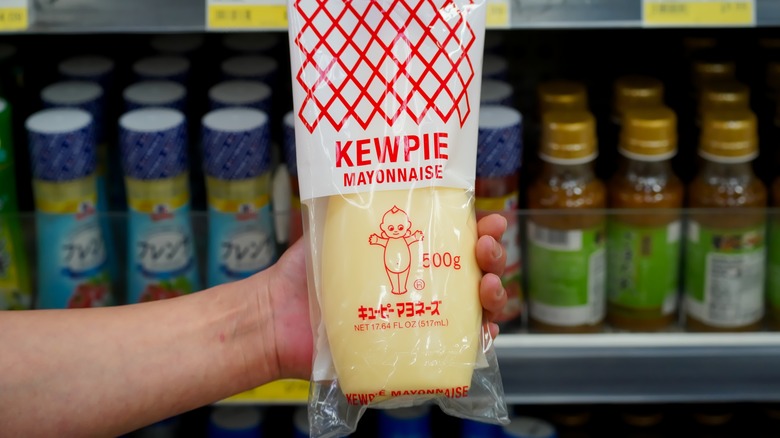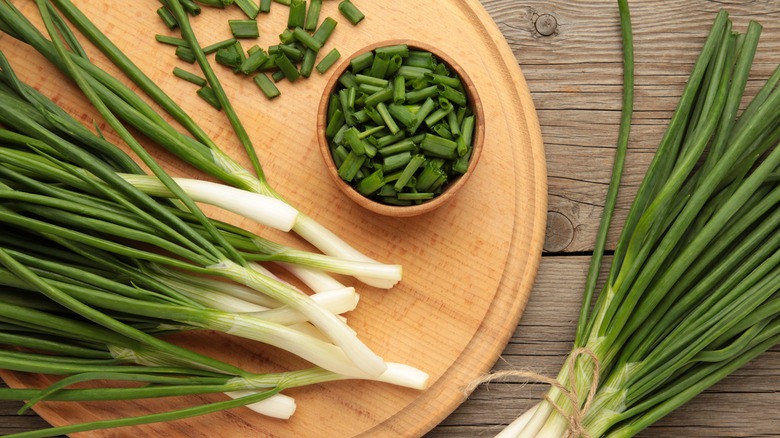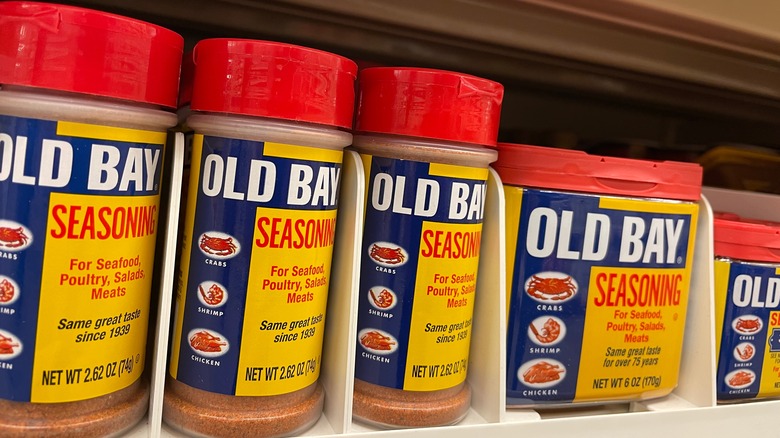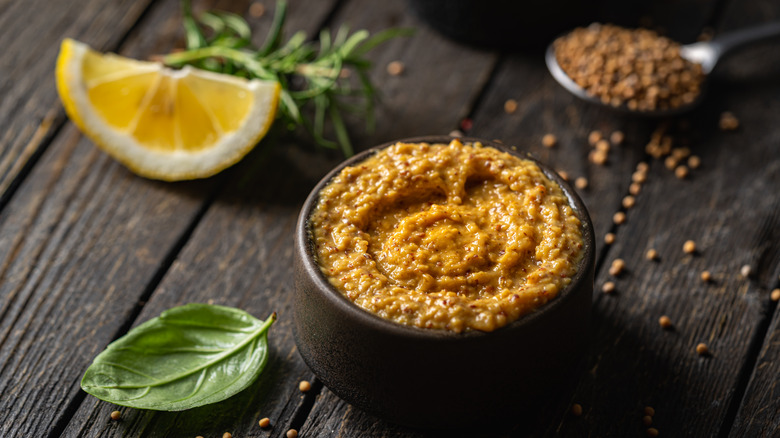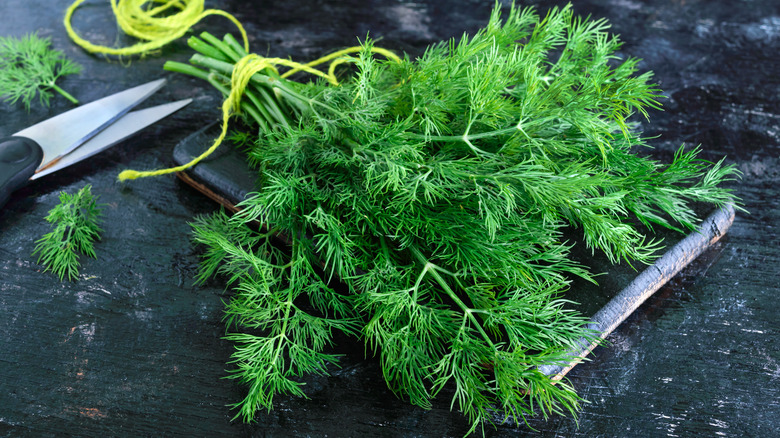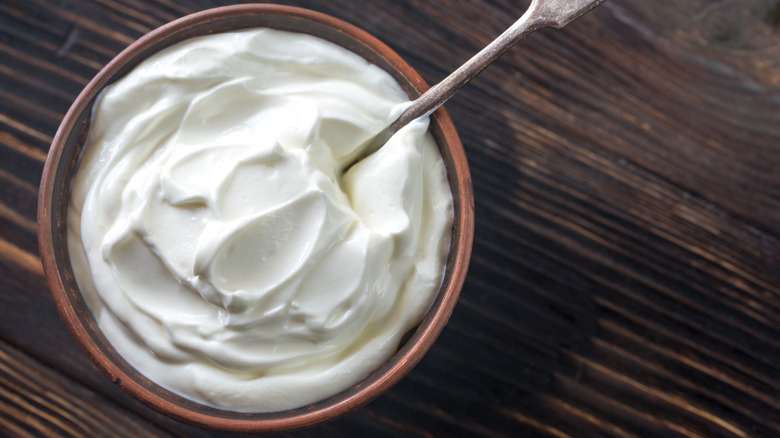15 Simple Ways To Upgrade Tartar Sauce
Like many of the world's most iconic sauces, tartar sauce has roots in French cuisine, where it was once used as an accompaniment to the raw beef delicacy, steak tartare. It's a beautifully simple sauce, requiring just a handful of common ingredients in order to whip up your own at home.
These days, tartar sauce is most often associated with seafood. In particular, it's a classic condiment for pairing with foods such as fried fish, seafood platters, fish tacos, and crab and fish cakes. Its simplicity and versatility make it a sauce that gives you plenty of options when it comes to upgrading and adjusting its flavor profile, especially if you want to tailor it to a specific style of cuisine. For starters, there are ways to enhance the creamy mayonnaise base, tweaking the flavor and consistency. You can play around with extra seasonings and herbs to improve the taste or add fresh ingredients for interesting new textures and to improve the visual appeal. You may also want to increase the heat of your tartar sauce to give it a kick that will make milder dishes more interesting or increase the intensity of spicy meals.
Below is a list of ways you can upgrade your homemade tartar sauce with minimal fuss, easy-to-find ingredients, and no requirements for specialized cooking techniques or fancy kitchen equipment.
Greek yogurt
Although tartar sauce typically employs mayonnaise as its base ingredient, Greek yogurt can be an excellent substitute or addition to your base. For starters, Greek yogurt shares enough similarities with mayonnaise that you're not going to be making any drastic flavor changes to your sauce.
That said, Greek yogurt has a much smoother texture than mayo, which results in a creamier tartar sauce, and it has a more notable tanginess that complements the rest of the usual ingredients. Yogurt also makes for a more nutritious version of tartar sauce, as it has more protein, less cholesterol, and a wider range of vitamins and minerals than mayo. If you choose a non-fat yogurt, you can also dramatically cut down on the amount of calories. Although you can straight-up swap the mayo for Greek yogurt, it's generally better to use a combination of the two, tweaking the ratios until you hit your personal sweet spot for texture and flavor.
Worcestershire sauce
Worcestershire sauce has a weird name and an even weirder history, but it's one of the most effective seasoning agents around. Although the ingredients used in each brand can vary, it tends to feature a vinegary, fermented base of onions, garlic, and anchovies, with molasses for sweetness and an array of flavoring spices.
In many ways, Worcestershire sauce is a more versatile cousin to fish sauce, and so it's naturally at home in a tartar sauce. More importantly, Worcestershire sauce is one of the most effective ways to add depth to a recipe, providing a rich umami element in just a few dashes. When it comes to upgrading your tartar sauce with Worcestershire sauce, less is usually more, but this depends on what other ingredients and seasonings you're planning on adding. It's best to start with just a few dashes — no more than a teaspoon — and taste. If you feel it needs more, add a dash at a time until you get the perfect balance.
Fresh parsley
One of the best features of tartar sauce is that despite its rich flavor and texture, it has a freshness to it, which is one of the reasons it complements fish dishes so well. Adding herbs, like parsley, is a great way to boost this freshness even further.
With a slight earthiness and a clean, peppery tang, parsley has enough character to stand up to the rest of the tartar sauce ingredients without overpowering any of them. You can use dried parsley if it's all you have, but nothing beats the fresh stuff. Simply chop it up into small pieces and stir it into the base of the sauce with your other additions. Aside from adding to the flavor, the herb will also make your sauce pop visually. Again, you don't need to add too much to make a noticeable improvement, and you can adjust the amount as required.
Capers
Despite commonly being associated with seafood, capers are actually a type of edible flower bud that get their unique briney flavor from pickling. However, the thing that sets capers apart from other pickled ingredients is their intense saltiness.
Capers are slightly olive-like in terms of their flavor but with a pronounced lemony tang and a slightly floral aspect that sets them apart, making them a common pick for upgrading tartar sauce. They also make the sauce's texture much more interesting and boost its visual appeal, giving you a little green salt bomb with each mouthful that contrasts delightfully with the creamy base of the sauce. If you want to reduce the pungency of the capers and give them a crispier texture, you can also drain them from their brine and give them a quick fry in a little bit of hot oil before stirring them throughout your tartar sauce.
Honey
Although tartar sauce is a notably savory condiment, that doesn't mean it can't benefit from a slight touch of sweetness to balance out the predominantly tart and tangy ingredient list. However, we have to rule out sugar as there's no way to dissolve the granules in the cold sauce.
Instead, try drizzling a little bit of high-quality honey through your tartar sauce. Not only does honey have a richer and, frankly, more intriguing flavor than standard sugar, but it also pairs well with lemon juice and pickles. The main thing to bear in mind is that if you're using sweet pickles or a combination of sweet and sour pickles, you may not need as much honey to balance out the flavors. There's also the added bonus that honey will thicken your tartar sauce and improve the texture, which is extra helpful if you're using Greek yogurt for the base.
Roasted jalapeños
There are a few ways you can give your tartar sauce a little bit more kick, and jalapeño peppers strike the perfect balance of spice and flavor. You can just dice up the fresh peppers and stir them into your sauce mixture, but you may want to roast them first.
Roasting the chiles before you slice them up tempers their heat while making them a little bit sweeter. They only take about 3-4 minutes in the oven, but if you leave them until the skin starts to char and blister, you can get a nice smoky flavor, too. Adding jalapeño peppers is a great way to elevate slightly blander-tasting fish dishes, such as deep-fried calamari or tilapia. The jalapeño flavor is also perfect for pairing with spicier cuisines, especially Mexican dishes. Try using a jalapeño-infused tartar sauce instead of sour cream next time you're making fish tacos or blackened salmon.
Horseradish
If you're still chasing a spicy kick and jalapeños aren't quite doing it for you, horseradish is another option. A type of root vegetable in the mustard family, horseradish has a uniquely earthy spice that puts a new spin on tartar sauce.
Horseradish is a great spice to use for more traditional dishes like fish and chips. It has a heat that hits your sinuses like wasabi, and the two items taste so similar that horseradish is sometimes dyed green and passed off as wasabi. However, bear in mind that the type of horseradish you'll find can vary. Fresh horseradish is slightly hotter than prepared horseradish, which is typically preserved in vinegar, so you'll want to factor in what sort of flavor you want from it in your tartar sauce. You can also buy horseradish sauce, but this isn't your best option as it's already been mixed with a creamy base like mayo or sour cream.
Roasted garlic
There are very few savory dishes that can't be upgraded with fresh garlic. It has such a versatile flavor that it's unlikely to make your tartar sauce clash with any food pairings — but you might not want to use raw cloves.
Because you're not cooking the tartar sauce, raw garlic pieces will probably be too spicy and intense. You can pre-fry your garlic, but roasting it is the way to go, as it brings out a delicious sweetness and reduces the spiciness. Grab yourself a whole bulb of garlic, peel away the loose, papery outer layer, and chop about ½ inch off the top of the bulb to expose the cloves within. Drizzle over a little olive oil and pop the bulb in a preheated oven on a roasting tray. About 30 minutes at 400 degrees Fahrenheit should be enough. When the bulb has cooled slightly, you can squeeze the roasted garlic out as a rough paste and stir it into your sauce mixture.
Sriracha
The "ketchup of hot sauces," Sriracha's versatility makes it an excellent ingredient for boosting the flavor profile of tartar sauce. It's mild enough not to overpower its companion ingredients but with enough unique qualities to make a noticeable difference to the taste.
Sriracha's chili and vinegar base will increase the spice of your tartar sauce while giving it some extra tang that's ideal for fish-based dishes, especially those with an Asian twist. It usually contains garlic as well as some basic seasonings that will increase the umami notes, too. The main drawback of Sriracha is the uncertainty around its availability, with shortages frequently affecting supply. The good news is that there are plenty of excellent hot sauces you can substitute for Sriracha if this does happen again; however, they do have varying taste profiles. Before you add a different hot sauce to your tartar sauce recipe, make sure you experiment with it first to confirm that it will still pair effectively with your dishes of choice.
Kewpie mayonnaise
The most popular style of mayonnaise in Japan, kewpie mayo, has a lot to offer, especially compared to the American style, which can taste bland by comparison. While blandness isn't always a bad thing, kewpie can be a superb ingredient to use as a base for your tartar sauce.
For starters, while regular mayonnaise is made using whole eggs, kewpie mayo is made with just egg yolks, giving it a much smoother, creamier texture. The yolks are combined with a little salt, vegetable oil, and, most importantly, a proprietary blend of vinegars. The result is a uniquely delicious and tangy mayonnaise with heaps of umami that brings out the best in all manner of dishes. Although you can use a Kewpie-based tartar sauce with any number of dishes, it's perfect with Japanese-style fish dishes, and you can even use it as a companion sauce for sushi. It's possible to only use kewpie mayo for your tartar base, but you can also split the base with regular mayo for a less intense sauce.
Green onion
While it's entirely possible to make tartar sauce without onion, many recipes suggest adding it as an ingredient to add more crunch to the texture and to up the tang factor. You can choose from white onions, red onions, or yellow onions, but that said, green onions — also known as scallions — are arguably the best of the bunch.
The white bulb of the green onion is the part that packs the most punch, while the green stem is also edible and imparts a slightly herbaceous, chive-like flavor. By thinly slicing and dicing the whole green onion from top to tail, you can add a combination of the bulb and stem to your tartar sauce for the best of both worlds. You'll improve the texture while still keeping your sauce nice and creamy, plus it'll have a better visual appeal thanks to the lush green stem pieces.
Old Bay seasoning
In the culinary world, there are few combinations as iconic as Old Bay and seafood. Old Bay has been a seasoning staple for over 80 years and gained fame as the ultimate Cajun-esque accompaniment thanks to its unique profile and seemingly limitless usability.
The precise recipe for Old Bay is a closely guarded secret, with only a few of the 18 ingredients officially confirmed by the company. However, based on faithful recreations, we can assume it contains a variety of peppers and paprikas, and seasonings such as bay leaves, ginger, celery salt, and ground mustard. While it is possible to buy premade jars of Old Bay tartar sauce — further proof that it's an excellent ingredient for upgrading the condiments — you'll still get the best results by making your own and adding the seasoning yourself. About 2 teaspoons of Old Bay per cup of mayonnaise should do the trick, but you can adjust to taste.
Whole-grain mustard
Almost every version of tartar sauce calls for mustard, providing the earthy heat that binds the ingredients together. Typically, recipes call for the French-style Dijon mustard.
However, there are numerous types of mustard available, ranging from the fiery English style to the milder American sauce. While you could use either of these, Dijon is the most popular, as it's hot and flavorful enough to make an impact without outshining the other ingredients. Alternatively, you can choose whole-grain mustard instead. Taste-wise, whole-grain mustard isn't dissimilar to Dijon mustard, but the texture makes all the difference. While most mustards use ground mustard seeds, whole-grain mustard includes non-ground seeds. These seeds are ideal for adding a little extra crunch and visual flair to tartar sauce without changing the classic taste. You can use exactly the same amount as you would with Dijon mustard and simply stir it through your sauce mixture.
Fresh dill
As herbs go, few are better suited to fish dishes than dill, a close relative of celery and parsley. It boasts a somewhat unique flavor that's grassy with hints of anise, and it doesn't need to be cooked in advance.
In fact, there's a good chance you've already got some dill flavoring in your tartar sauce, as it's commonly used for flavoring pickles. If you're buying dill, just be aware that the thin, fresh leaves that we want to use are sometimes called dill weed, while the name "dill" can be used to refer to the leaves or the seed of the plant — and we don't need the latter in this instance. Dill packs a lot of flavor in a very small space, so you don't need to go overboard. Just slice up the leaves and sprinkle them into your tartar sauce as you mix it to raise the herbaceousness and make it pop with a green freshness.
Crème fraîche
When making tartar sauce, some folks like to add sour cream to their base to thicken it up and add some extra tang. While this is an excellent way to upgrade tartar sauce, if you really want to dial things up a notch, try using crème fraîche instead.
Although they have a lot in common, crème fraîche and sour cream aren't the same thing. Crème fraîche is generally less sour than sour cream, and it has a higher fat content and a thicker consistency. Although crème fraîche is less tart than sour cream, this shouldn't matter much as your other ingredients will be sour enough to compensate. Again, the ratio of mayo to crème fraîche you choose is down to personal preference. That said, Gordon Ramsey, who swears by the ingredient in his tartar sauce, uses about 3 tablespoons of crème fraîche for every ⅓ cup of mayonnaise.

